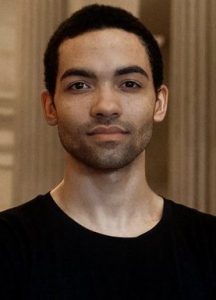A few months ago, Silas Farley was on track to become a soloist for — and maybe one day the principal dancer of — the New York City Ballet. Now he has his sights set on shaping the dance world from the other side of the stage.

“(Farley) started doing some leading roles and realized that perhaps that’s not the best way for him to spend his life,” said Sasha Janes, Chautauqua Dance’s director of contemporary studies. “He wants to actually be on the other side and become more of an artistic leader.”
In early March, Farley announced his retirement from the company. He is now focusing on working as an instructor and choreographer and is currently attending Harvard Extension School with plans to study management.
Farley will appear in conversation with Janes for this week’s Cocktails Concerts and Conversations with Chautauqua Dance at 5 p.m. EDT Tuesday, July 21, on the CHQ Assembly Virtual Porch.
“We’ll talk about his career and where it’s going now, and how he hopes to get to where he wants to be,” Janes said. “Which he will.”
This summer Farley is serving as one of Chautauqua Dance’s 2020 guest faculty for the company’s four-week Chautauqua Online School of Dance.
Janes has known Farley since he got his start training with the Charlotte Ballet in North Carolina, where Janes was working as a resident choreographer.
“(Farley) is this super well-read, super-bright, super-enthusiastic human being,” Janes said. “I won’t actually have to say anything (for Cocktails, Concerts and Conversations); I’m just going to turn on the camera and let him talk, because he’s just so interesting.”
Janes is excited to discuss Farley’s motivation for retirement, which in part came from his desire, as a Black man himself, to work behind the scenes for more diversity in dance. In a recent interview with The New York Times, Farley discussed his plan to work for more systemic change in the dance world.
“I’ll be able to cultivate and develop people of all different ethnic backgrounds even more directly by being a teacher and choreographer and scholar,” he told New York Times dance citric Gia Kourlas. “We need all of this stuff about systemic racial justice to be worked out in the makeup of who’s writing the dance history. Who’s choreographing the ballets? Who’s teaching? Who’s training teachers? Who’s lecturing? I can take up all of those other dimensions.”





